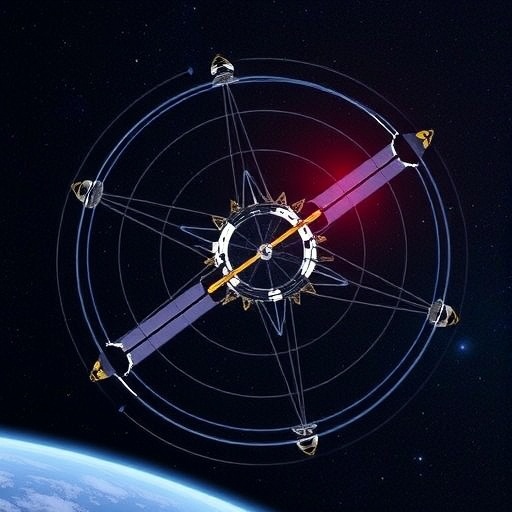Southwest Research Institute (SwRI) has ventured into the complex arena of micrometeoroid and orbital debris (MMOD) with a groundbreaking detection and characterization system. This innovative technology is specifically designed for satellites and spacecraft, addressing a growing threat posed by space debris. With the increasing number of satellites in orbit, often a result of various incidents including satellite malfunctions and anti-satellite tests, the prevalence of debris around our planet has escalated. This debris can take years to deorbit, presenting a significant hazard to operational spacecraft and satellites.
The newly developed MMOD detection system enables real-time monitoring of impacts from space debris, capturing vital post-impact data that might otherwise go unnoticed. Many spacecraft are built to withstand minor impacts, and often, operators on Earth are unaware of these events. This innovative device, however, proactively sends critical data back to ground control before any visible damage becomes apparent. As explained by Dr. Sidney Chocron, the leading scientist responsible for this project, the insights provided by the MMOD system could influence future spacecraft designs, taking into account the impact qualities of space debris.
SwRI’s system is ingeniously simple yet effective. It is made up of a structural component embedded with an array of highly sensitive sensors tasked with collecting data during impacts. This information can then be analyzed to identify crucial details, such as the size and density of particles orbiting Earth. Perhaps most notably, the system has capabilities to detect smaller particles that typically elude visibility from a terrestrial perspective. This allows for a more comprehensive understanding of the debris field surrounding our planet.
In practical terms, the MMOD detection system can be mounted directly onto spacecraft or be an integral part of their design. This flexibility is essential, as it allows for varied implementation based on the specific requirements of different missions. The ability of the system to alert operators to strikes can be pivotal in managing responses to potential future impacts, contributing to a more proactive approach to debris management.
The testing of this system involved a sophisticated light gas gun, which was used to simulate the vacuum of outer space and replicate the impact conditions associated with orbital debris. This highly controlled method allowed SwRI to fire small projectiles at panels outfitted with the MMOD detection technology, thus gathering essential data on how structures react under such impacts. The results of these rigorous tests provide meaningful insights that validate the effectiveness of the MMOD system, confirming its ability to discern when and where impacts occur while identifying the speed and composition of the debris.
Notably, while the MMOD detection and characterization system does not directly prevent debris collisions, it does represent a significant advancement in early warning capabilities. For instance, if a satellite detects an impact, it could potentially communicate this information to other satellites in the vicinity, allowing them to take evasive action if feasible. This adds a crucial layer of safety for spacecraft operating in increasingly congested orbital environments.
As the urgency around managing space debris grows, the work being done at SwRI has far-reaching implications for the future of space exploration. The development and eventual deployment of a flight-ready version of the MMOD system could redefine standards for satellite and spacecraft design. With the successful full-scale testing of this system, SwRI is actively seeking funding opportunities to take this project to the next phase, ultimately aiming to advance our understanding of the MMOD debris field.
Chocron emphasizes the overarching goal: to characterize and map the debris field around Earth accurately. Having a well-defined knowledge of space debris will not only aid current missions but will also enhance the safety and resilience of future missions into outer space. By providing tools that extend the life and operational capability of spacecraft, we are laying the groundwork for a sustainable future in space exploration.
As the advent of new technologies propels humanity deeper into space, the need for robust defense against orbital debris has never been more critical. SwRI’s MMOD detection and characterization system represents an essential step toward safeguarding current and future missions, contributing significantly to enhancing our capacity to operate safely in the vastness of space.
In summary, the development of this specialized detection system is an impressive feat of engineering and research, reflecting deep dedication to solving one of the significant challenges of modern spaceflight. With such advancements, the future of space exploration seems not only more attainable but considerably safer, allowing humanity to reach new frontiers while actively managing the risks associated with our ventures into the cosmos.
Subject of Research:
Article Title:
News Publication Date:
Web References:
References:
Image Credits:




